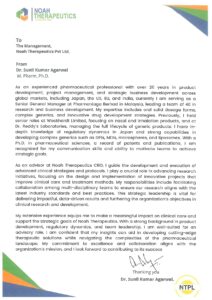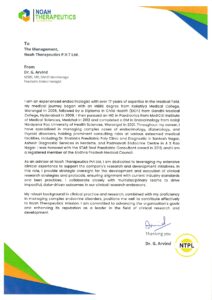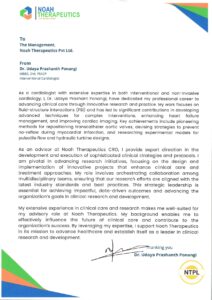Dengue Fever
Dengue fever is a serious illness spread by mosquitoes. It’s common in tropical and subtropical areas like Southeast Asia, the Pacific Islands, the Caribbean, and parts of Central and South America. This article explains what dengue fever is, including details about the virus, its phases, symptoms, incubation period, and more.
The Dengue Virus

Dengue fever is caused by the dengue virus (DENV), which belongs to the Flavivirus family. There are four types of this virus: DENV-1, DENV-2, DENV-3, and DENV-4. Getting infected with one type gives you long-lasting protection against that type, but only temporary protection against the others. This means that if you get infected with a different type later, you might experience a more severe illness.
How the Virus Spreads
-
- Structure: The dengue virus is a single-stranded RNA virus surrounded by a protective envelope with proteins that help it enter human cells.
-
- Transmission: Humans get infected when bitten by a mosquito that has the virus. After biting an infected person, the mosquito can then spread the virus to others.
Incubation Period
The incubation period is the time between being bitten by an infected mosquito and when symptoms start to show. For dengue fever, this period is usually 4 to 10 days, with most people starting to feel sick around 5 to 7 days after the bite. During this time, the virus multiplies in the body, but symptoms aren’t visible yet.
Phases of Dengue Fever
Dengue fever goes through several phases:
1. Febrile Phase
This is the first stage of dengue fever and includes:
-
- High Fever: A sudden high fever, often between 39°C to 40°C (102°F to 104°F), lasting 2 to 7 days.
-
- Other Symptoms: Severe headache, pain behind the eyes, muscle and joint pain, nausea, vomiting, and sometimes a rash.
2. Critical Phase
This phase happens around days 3 to 7 of the illness and involves:
-
- Plasma Leakage: The body starts leaking fluids from the blood vessels, which can lower blood pressure and cause shock. This is linked with high hematocrit (a measure of blood concentration) and low platelet count.
-
- Severe Conditions: This phase can lead to Dengue Hemorrhagic Fever (DHF) or Dengue Shock Syndrome (DSS). Close monitoring is essential as these complications can develop quickly.
3. Recovery Phase
The recovery phase starts around days 7 to 10 and includes:
-
- Fever Decreases: The fever usually goes away, and symptoms like rash and joint pain start to improve.
-
- Fluid Balance: The fluid leakage is corrected, and the body’s fluid levels return to normal. Most people start to feel better and regain their strength.
-
- Ongoing Monitoring: Even though recovery is generally positive, continued observation is necessary to ensure no complications occur.
Dormant Phase
The “dormant phase” refers to the time after a person is infected but before symptoms appear. After a mosquito bite from an infected mosquito, the dengue virus enters the blood and begins to grow. This period, known as the incubation period, is when the person does not show symptoms and is not yet able to spread the virus to others. This phase lasts from 4 to 10 days, with symptoms usually appearing around 5 to 7 days after infection.
Symptoms

Dengue fever symptoms can range from mild to severe and include:
-
- High Fever: Often reaching 39°C to 40°C (102°F to 104°F) and lasting 2 to 7 days.
-
- Severe Headache: Pain mostly behind the eyes.
-
- Eye Pain: Deep pain around the eyes.
-
- Muscle and Joint Pain: Severe pain that can feel like broken bones.
-
- Nausea and Vomiting: Leading to dehydration.
-
- Fatigue and Weakness: Feeling tired and weak for weeks after the fever ends.
-
- Skin Rash: Appearing a few days after the fever starts, sometimes itchy.
-
- Bleeding Symptoms: In severe cases, symptoms like nosebleeds, bleeding gums, or easy bruising.
Severe Forms: DHF and DSS
Severe dengue forms are:
-
- Dengue Hemorrhagic Fever (DHF): Includes bleeding, plasma leakage, and low platelet count. It can lead to shock if not treated quickly.
-
- Dengue Shock Syndrome (DSS): Occurs when plasma leakage causes a serious drop in blood pressure, leading to shock. Immediate medical care is necessary.
Diagnosis
To diagnose dengue fever, doctors use:
-
- Blood Tests: To check for dengue antibodies (IgM and IgG) or the virus itself.
-
- PCR Tests: To detect dengue virus RNA, especially in the early stages.
-
- Blood Counts: To monitor platelet levels and hematocrit, helping assess the disease’s severity.
Treatment and Management
There is no specific treatment for dengue fever. Care focuses on:
-
- Fluid Replacement: Keeping hydrated is crucial to prevent dehydration and manage plasma leakage.
-
- Pain and Fever Relief: Acetaminophen (paracetamol) is used for pain and fever. NSAIDs should be avoided because they can increase bleeding risk.
-
- Monitoring: Watching for signs of severe dengue, especially during the critical phase, is essential.
Prevention
Preventing dengue fever involves:
-
- Removing Breeding Sites: Regularly emptying containers that hold water and using insecticides.
-
- Using Repellents: Applying mosquito repellents containing DEET, picaridin, or oil of lemon eucalyptus.
-
- Wearing Protective Clothing: Wearing long sleeves, long pants, and socks to avoid mosquito bites.
Statistics of Dengue in India :


Conclusion
Dengue fever, caused by the dengue virus (DENV), poses a significant health challenge in many tropical and subtropical areas. Understanding the virus, its incubation period, symptoms, and the different phases of the illness is essential for effective management and prevention. Although there is no specific antiviral treatment, supportive care and preventive measures remain vital. While approved vaccines like Dengvaxia (CYD-TDV) and TAK-003 are available, they are designed to prevent dengue infection rather than treat active cases, and are not effective against live infections once they occur. Ongoing clinical trials and clinical research continue to advance our understanding and development of new interventions. In addition to controlling mosquitoes and boosting public awareness, advancing vaccine development is crucial for fighting dengue fever and minimizing its global impact.




